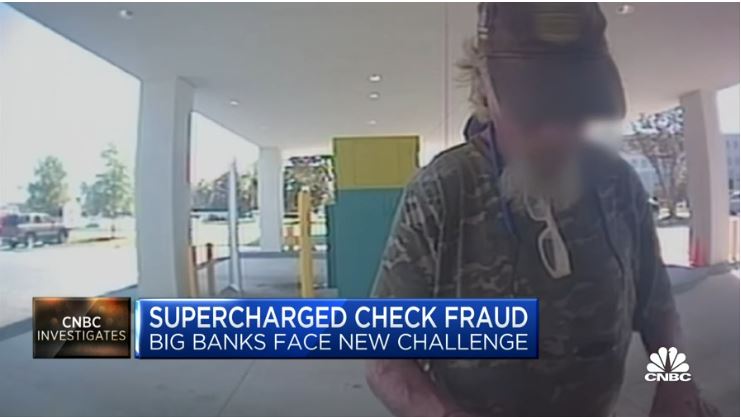Banks Reported 84% Increase in Check Fraud from 2021 to 2022 — According to US Treasury FCEN
- Popular messaging platforms like Telegram are aiding fraudsters
- Telegram allows fraudsters to stay hidden behind aliases and encrypted messages
- "Walkers" are recruited to carry out in-person transactions with fake checks
Many industry experts agree that check fraud has grown 3X from its pre-pandemic levels. We now have data to confirm the continued upward trend of check fraud -- reported by the Financial Crimes Enforcement Network (FCEN), a unit of the U.S. Treasury Department. According to a CNBC interview with Paul Benda of the American Bankers Association, banks absorbed nearly 250,000 cases of check fraud nationwide in 2021. By last year, that number exploded: nearly 460,000 check fraud cases were reported – an increase of 84%.
While 84% is significant and confirms the increase of check fraud, we must remember that this only represents the number reported at the FCEN. While the FCEN mission is to "safeguard the financial system from illicit use, combat money laundering and its related crimes including terrorism, and promote national security through the strategic use of financial authorities and the collection, analysis, and dissemination of financial intelligence," official aggregated industry numbers have not been previously reported by the FCEN. Additionally, there are thousands, if not millions of cases of check fraud that go unreported to the FCEN, and even cases of check fraud not reported to the banks according to Frank McKenna, the Co-Founder and Chief Fraud Strategist for PointPredictive and author of the FrankonFraud blog.
Safe, Secure Messaging = Positive or Negative?
As noted in the video, check washing scams have been given a new life via popular messaging platforms like Telegram. The proliferation of pandemic relief funds and introduction of new, secure messaging apps have streamlined the scheme and made possible more elaborate processes. Scammers are able to step up their operations by using Telegram to efficiently -- and anonymously -- recruit and communicate with "collaborators."

Pandemic relief funds and new, secure messaging apps have made it all the more easy to execute and get away with the elaborate schemes.
“It’s a big problem that’s getting worse,” said Paul Benda, senior vice president of cybersecurity and risk at the American Bankers Association.
One app in particular, Telegram, has made it easier for organized crime groups to recruit, train, organize and execute the schemes, according to Maria Noriega, a senior cyber-intelligence analyst at Q6 Cyber, a cybersecurity firm that is a consultant to CNBC.
While safe, secure messaging apps can be positive for individuals who desire privacy, scammers are also able to leverage those protections for nefarious operations.
U.S. law enforcement officials point out that Telegraph is popular because it allows users to send encrypted messages to each other and groups, and identities can be hidden behind anonymous user names. This is a perfect environment for fraudsters, combining speed of communication with anonymity.
Anatomy of a Scam
The CNBC story offers a concise breakdown of the scam, as aided by encrypted communications:
In criminal slang, “walks” are trips to the bank to cash those bogus checks. “Walkers” are the people who are hired to physically enter the banks to commit the fraud, taking a brunt of the risk in the scheme.
The elderly and homeless often serve as walkers because they’ll frequently execute the crime for a low payout and bank tellers are less likely to question the credibility of an elderly person, according to Benda.

Source: CNBC Video
So-called brokers are one rung above walkers in the hierarchy of a criminal enterprise. They organize groups of walkers to go into banks, selecting them for age, race and gender, to be able to plausibly match the names on the checks they are cashing. To help with appearances, some of those brokers buy outfits for their walkers, or take them to the hair salon for a quick trim and color.
Those brokers, in turn, sell the walkers’ services to other criminals who steal physical checks from the U.S. mail – including sometimes brazen thefts from blue postal boxes, home mailboxes and even apartment building mailrooms. The stolen paper checks are “washed,” or forged, to change the name of the recipient and the amount on the face of the check.
Using a fake identity, the walkers provide a combination of real and false personal information to open a bank account and prevent law enforcement officials from tracing the account to a specific person.
Banks Can't Do It Alone
Banks are in the unenviable position of taking the brunt of the check fraud challenges. But should they be?
Paul Benda, senior vice president of cybersecurity and risk at the American Bankers Association notes in the video:
"We can't do it alone. We really the US Postal Service to better protect the mail. We want law enforcement to step up their game and prosecute more of these cases."
We have covered in our blog how the defunding of the US Post Office has led to reduced number of postal police and, in turn, enabled criminals to easily rob mailboxes and carriers. We've also relayed how mailbox/carrier robberies and check fraud have garnered Congressional attention. But, what else can be done?
This is where fintechs like OrboGraph have made their mark. Banks now have access to the technologies needed to take on the scammers. By deploying the latest AI and machine learning technologies leveraging image forensics, banks have the tools to detect counterfeit, forged, and altered checks before the fraudsters are able to access the funds. Combine this with transactional analytics, and banks are about to reduce losses in a period where check fraud attempts continue to increase.
